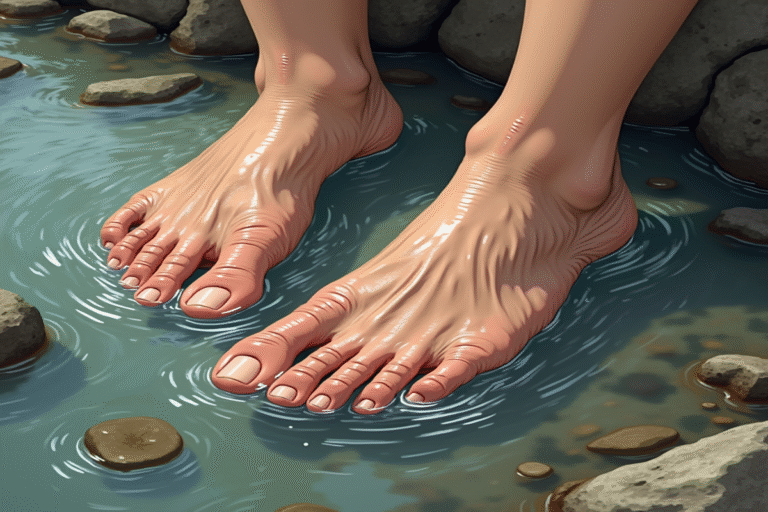Have you ever noticed how your fingers and toes get all wrinkly after a long bath or swim? That prune-like transformation has puzzled scientists for decades, and the explanation is more fascinating than you might expect.
Not Just Absorbing Water: Debunking the Old Theory
For years, scientists believed that wrinkly fingers were simply the result of your skin absorbing water, like a sponge. The idea was that water would pass through the outer layer of skin (the epidermis), causing it to swell and create those characteristic wrinkles.
This explanation made sense, but it didn’t account for one critical observation: if you damage certain nerves in the fingers, they no longer wrinkle in water. Why would a passive process like water absorption depend on nerve function?
An Evolutionary Advantage: The New Understanding
In 2011, evolutionary biologists proposed a groundbreaking theory that has gained widespread acceptance: finger wrinkling is actually an active biological response controlled by your nervous system, specifically evolved to help our ancestors grip wet objects better.
Think of it as your body’s built-in rain tire technology. Just as tire treads channel water away to improve contact with the road, your wrinkled skin creates channels that divert water away from the gripping surfaces of your fingers, improving traction on wet objects.
Your Nervous System at Work
The process that creates pruney fingers is called vasoconstriction. When your hands are submerged in water for about 5-10 minutes, your autonomic nervous system (the part that controls involuntary functions) signals the blood vessels in your fingertips to constrict. This reduces blood volume in the digits and causes the overlying skin to pull inward, creating the wrinkle pattern.
This is why people with certain nerve damage or conditions affecting the sympathetic nervous system don’t experience wrinkly fingers in water—their bodies can’t send the signal to start the process.
What Your Wrinkly Fingers Reveal About Your Health
The degree and speed at which your fingers wrinkle can actually provide insights into your nervous system health. Researchers have used the “water immersion test” to assess autonomic nervous system function in patients with various conditions:
- Diabetes: People with diabetic neuropathy often show abnormal wrinkling patterns
- Parkinson’s disease: Some studies show reduced or delayed wrinkling
- Cystic fibrosis: Patients may exhibit excessive wrinkling
- Age-related decline: The wrinkling response can diminish with age
Fascinating Facts About Finger Pruning
The science of wrinkly fingers continues to reveal interesting insights:
- Only primates appear to have this adaptation, suggesting it evolved relatively recently
- The wrinkle patterns are unique to each person, like fingerprints
- The same mechanism causes wrinkling in toes when they’re submerged
- Scientists have measured up to a 12% improvement in handling wet objects with wrinkled fingers compared to smooth ones
- It takes about 5 minutes of water immersion to begin the wrinkling process
Laboratory experiments have confirmed that subjects with water-wrinkled fingers can pick up wet marbles faster than those with dry, unwrinkled fingers—but interestingly, wrinkled fingers perform slightly worse when handling dry objects.
An Ancient Adaptation Still Serving Us Today
Next time your fingertips turn pruney after a long shower, don’t just rush to dry them off—take a moment to appreciate this elegant evolutionary adaptation. Your body is automatically optimizing itself for wet conditions, just as it did for our ancestors who needed to gather food from streams or maintain grip during rainstorms.
This seemingly simple reaction offers a window into our evolutionary past and shows how our bodies continue to adapt to our environment, even in our modern world of waterproof gadgets.





